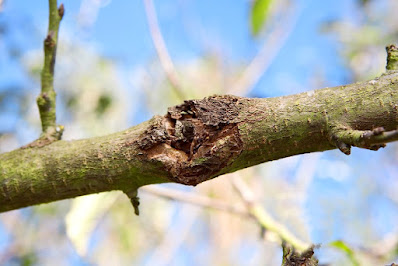Unveiling the Complexity of Plant Disease Symptoms: An In-Depth Exploration
Introduction:
The intricate world of plant diseases manifests through an
array of symptoms, each providing unique insights into the underlying causes
and contributing factors. This detailed exploration aims to unravel the
complexity of these symptoms, offering a comprehensive understanding that
empowers growers to diagnose and address plant health issues effectively.
- Visible
Signs:
- Description:
Lesions represent localized areas of tissue damage, visible as
discolored spots or irregular patches on leaves, stems, or fruits.
- Variations:
Lesions can vary in size, shape, and color, providing clues about the
specific pathogen responsible for the infection.
- Causes:
Fungal pathogens, such as rusts and anthracnose, and bacteria often
induce lesions, compromising the affected tissues' structural integrity.
- Wilting:
- Description:
Wilting occurs when plant tissues lose turgor pressure, resulting in a
drooping or sagging appearance.
- Causes:
Fungal wilts, bacterial infections, or vascular diseases disrupt water
transport systems, leading to wilting and potential irreversible damage.
- Cankers:
- Description:
Cankers are sunken, necrotic areas on stems and branches, representing
localized lesions that penetrate deeper into the plant's vascular
tissues.
- Consequences:
Cankers impede nutrient and water flow, weaken the plant's structural
integrity, and create entry points for secondary infections.
- Galls:
- Description:
Galls are abnormal growths resulting from the plant's response to
pathogen invasion, often caused by nematodes, bacteria, or certain
fungi.
- Formation:
Pathogens release chemical signals triggering abnormal cell growth,
disrupting the normal development of plant tissues.
- Changes
in Growth Patterns:
- Stunted
Growth:
- Appearance:
Reduced plant size, limited biomass, and overall diminished stature.
- Impact:
Stunted growth negatively influences crop yield and quality, stemming
from various causes, including nutrient deficiencies, soil-borne
pathogens, or adverse environmental conditions.
- Deformed
Structures:
- Manifestation:
Distorted leaves, flowers, or fruits, indicating disruptions in the
normal development of plant organs.
- Factors:
Viral infections, often transmitted by insects, can alter plant growth
and lead to the development of distorted structures.
- Yellowing
(Chlorosis):
- Description:
Chlorosis, or yellowing, results from disrupted chlorophyll production,
affecting the plant's ability to photosynthesize.
- Causes:
Nutrient deficiencies, viral infections, and environmental stresses such
as waterlogged soils contribute to chlorosis, impacting overall plant
health.
- Abnormalities
in Reproduction:
- Reduced
Seed Production:
- Indicators:
Lower seed quantity and compromised seed quality.
- Factors:
Diseases such as damping-off, caused by soil-borne pathogens, can hinder
seed germination and reduce overall seed production.
- Aborted
Flowers or Fruits:
- Manifestation:
Premature dropping of reproductive structures, leading to reduced fruit
set and yield.
- Causes:
Fungal infections, inadequate pollination, or stress factors, including
extreme temperatures, may result in aborted flowers and fruits.
Conclusion:
In the intricate tapestry of plant diseases, understanding
the nuanced symptoms provides a roadmap for effective disease management.
Growers equipped with this detailed knowledge can navigate the challenges posed
by pathogens and environmental stressors, implementing targeted strategies to
preserve crop health and ensure sustainable agriculture. Regular monitoring,
coupled with a holistic approach to plant care, forms the foundation for
resilient and thriving plant populations in the face of diverse disease
pressures.
Frequently Asked Questions (FAQs) about Symptoms of Plant Diseases
1. Q:
How can I identify if my plants are suffering from a disease?
A: Look for visible signs such
as lesions, wilting, cankers, and abnormal growth patterns. Additionally,
monitor changes in growth, reproduction, and overall plant vigor.
2. Q:
What do discolored spots or lesions on my plant signify?
A: Lesions often indicate the
presence of a pathogen. Different colors and shapes can provide clues about the
specific type of disease. Common causes include fungal or bacterial infections.
3. Q:
Why are my plants wilting, even though I water them regularly?
A: Wilting can result from
various factors, including fungal wilts, bacterial infections, or issues with
the plant's vascular system. Check for signs of disease, and assess soil
moisture and drainage conditions.
4. Q:
What are cankers, and how do they affect my plants?
A: Cankers are sunken, necrotic
areas on stems or branches. They impede nutrient flow, weaken plant structure,
and can serve as entry points for secondary infections.
5. Q:
Are all abnormal growths on my plants harmful?
A: Not necessarily. Abnormal
growths, like galls, can be caused by the plant's response to pathogen
invasion. Identifying the specific pathogen causing the abnormality is crucial
to determine its impact.
6. Q:
How does stunted growth in plants occur, and what can I do about it?
A: Stunted growth may result
from various factors, such as nutrient deficiencies, soil-borne pathogens, or
adverse environmental conditions. Conduct soil tests, provide proper nutrients,
and address any underlying issues.
7. Q:
Can viruses cause distorted leaves and fruits in plants?
A: Yes, viral infections are
known to alter plant growth, leading to deformed structures. Insects often
transmit viruses, so controlling vector populations is essential for disease
prevention.
8. Q:
What causes chlorosis, and how does it impact plants?
A: Chlorosis, or yellowing of
leaves, can result from nutrient deficiencies, viral infections, or
environmental stress. It hinders the plant's ability to photosynthesize,
affecting overall health.
9. Q:
How do I know if my plants are experiencing reduced seed production?
A: Reduced seed production may
be indicated by fewer and lower-quality seeds. Diseases like damping-off, which
affects seed germination, can contribute to this issue.
10. Q:
Can stress factors, like extreme temperatures, lead to aborted flowers and
fruits?
A: Yes, environmental
stressors, including extreme temperatures, can result in aborted flowers and
fruits. Monitoring weather conditions and providing appropriate protection can
help mitigate such issues.











.jpg)
0 Comments